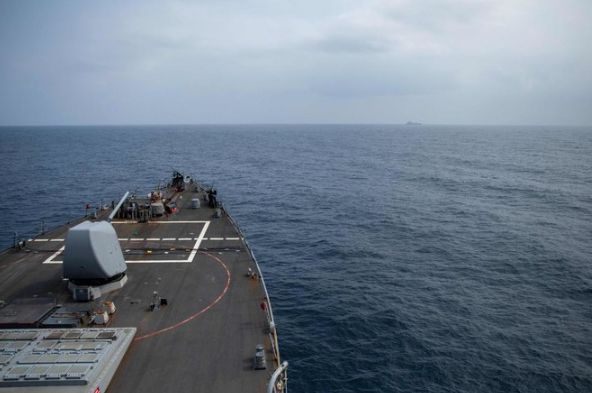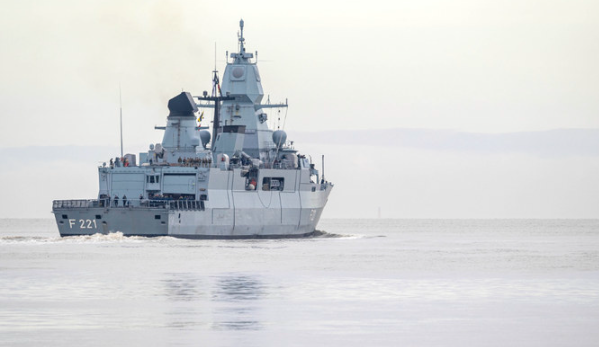Sri Lanka to Participate in US-Led Naval Mission Against Houthi Threats in the Red Sea
In a move aimed at safeguarding merchant vessels navigating the Red Sea against potential attacks by Houthi militants, Sri Lanka’s navy is gearing up to join the US-led naval operations, as disclosed by a spokesperson from the Sri Lankan navy on Tuesday.
The backdrop for this decision lies in the series of attacks perpetrated by Houthi forces on commercial shipping vessels passing through the strategically crucial Bab el-Mandeb Strait. These assaults gained momentum after the October 7 attack by Hamas and the subsequent conflict between Israel and the militant group in Gaza. In response to the escalating threat, the US, along with its allies, initiated Operation Prosperity Guardian, deploying warships from the US, France, and the UK to patrol the area.
The specific details regarding the deployment of Sri Lankan ships, including the designated date and patrol area, remain undecided, as confirmed by Navy Spokesman Capt. Gayan Wickramasuriya. This decision, however, has not been without controversy, with opposition leader Sajith Premadasa criticizing the government’s allocation of LKR 250 million ($777,000) for sending ships to combat Houthi rebels in the Red Sea amidst economic challenges faced by Sri Lankans.
State Minister of Defense Pramitha Tennakoon defended the government’s stance, emphasizing the nation’s commitment to fulfilling its “global responsibilities” and underscoring Sri Lanka’s opposition to terrorism in any form. Tennakoon also asserted that there would be no additional financial burden on Sri Lanka, as its ships are already patrolling the extensive maritime area in the Indian Ocean.
Impact of Houthi Attacks on Shipping in the Red Sea
Despite the challenges posed by Houthi attacks on vessels in the Red Sea, the stability of oil and fuel tanker traffic in December is evident, with a Reuters analysis revealing consistent shipping patterns. While container ships have rerouted due to heightened security concerns, the impact on oil flows has been less severe than anticipated.
Shipping costs and insurance premiums have risen, leading some oil companies like BP and Equinor to divert cargoes to the longer route around Africa. However, the Red Sea remains a more cost-effective option for most shippers compared to the alternative.
The frequency of tanker traffic in the south Red Sea and Gulf of Aden, the areas most affected by attacks, has shown resilience, with the number of tankers only slightly decreasing in December. Although chartering rates have doubled, reaching as high as $85,000 a day for Suezmax tankers, the impact on tanker traffic has not been as pronounced as initially expected.
Container ship traffic, on the other hand, experienced a significant decline, dropping by 28 percent in December from November, particularly in the second half of the month when attacks intensified.
Industry Response and Shifting Dynamics
Despite the challenges posed by the Houthi attacks, many major oil companies, refiners, and trading houses continue to use the Red Sea route, emphasizing the importance of avoiding schedule disruptions. Some oil tankers carrying Russian crude to India, a key route, remain unaffected by Houthi interests.
While some companies, such as BP and Equinor, have temporarily halted transits through the Red Sea, others, including Chevron and Reliance, continue to navigate the region, assessing safety based on evolving developments.
The decision to divert or transit via the Cape of Good Hope has been made by at least 32 tankers since the second half of December, showcasing a shift in shipping dynamics. This redirection has primarily involved companies that announced a pause on Red Sea movement or those associated with the US and Israel.
Although disruptions in the Red Sea have influenced shipping routes and impacted European imports of diesel and jet fuel, the overall supply situation remains stable. The ongoing uncertainty in the Red Sea has also prompted increased interest in US crude, contributing to a record 2.3 million barrels per day of crude exports to Europe in December.
As the situation continues to evolve, industry participants are closely monitoring developments in the Red Sea, balancing the need for cost-effective shipping with concerns about safety and security.






